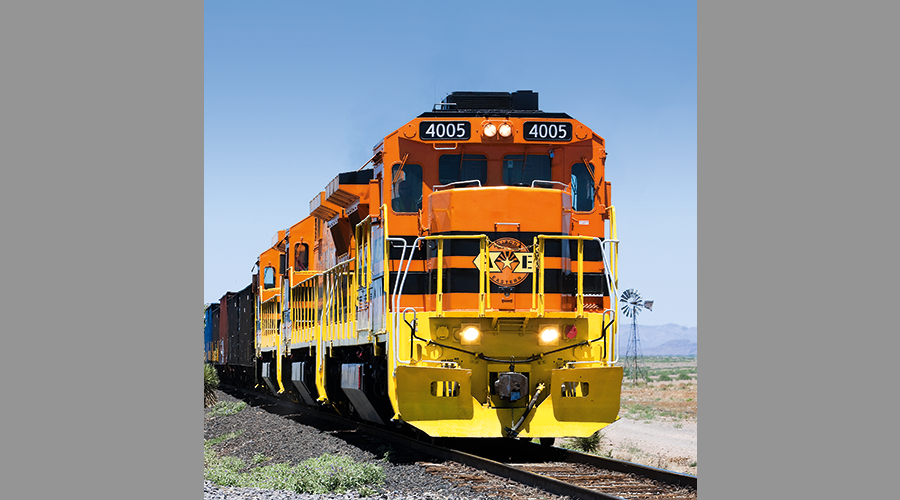Stay updated on news, articles and information for the rail industry
 railPrime
railPrime
April 2007
Rail News: Short Lines & Regionals
Dollars and sense in the short-line world - by Tony Hatch

|
|
| Tony Hatch | |
| Even if their volume growth isn’t the attention-getter it’s been in recent years, short lines and regionals remain in the forefront of investors’ minds. |
Even if their volume growth isn’t the attention-getter it’s been in recent years, short lines and regionals remain in the forefront of investors’ minds. And this is without RailAmerica Inc., which an affiliate of asset management firm Fortress Investment Group L.L.C. acquired last year for $1.1 billion.
But investors care about money, and it’s been money — the getting, borrowing, selling and attracting — that has caused investors to look beyond the mega-rails and the large, publicly traded short-line holding companies, which are now down to one (Genesee & Wyoming Inc.).
‘Buy’ side & ‘sell’ side interest
For a few years now, public investors, private-equity firms, bank lenders, investment banks, asset leasing companies, infrastructure funds and even the federal government all have been anxious to partake in the “railroad renaissance.” Why?
- Railroads remain on an earnings uptick and are close to earning their cost of capital. The publicly traded Class Is lead the way, with intermodal’s emergence and new-found rate power helping four of the Big 7 earn terrific rates of return.
- There is a liquidity boom, with long-term investors and short-term hedge funds all looking at this industry, as well as suppliers and related companies.
- There is a scarcity of railroads of investable size. Many large firms don’t like small investments — it takes the same amount of work to do deals, and the return is less. And private-equity firms, and hedge, infrastructures and mutual funds et al., want to put that money to work right now.
So, while the short line/regional space has always been deal friendly, and covered well by commercial banks and leasing companies, it has attracted the new rock stars of Wall Street — the private-equity firms. Fortress Managing Director Joseph Adams will deliver a keynote (“RailAmerica — The Path Ahead”) at the ASLRRA event. So far, Fortress has brought in new management and attracted a stampede of interest from both the “buy” and “sell” sides. Rumors abound about “sale books” to show potential buyers.
For public companies, private-equity ownership allows for a capital injection and time to grow far from the quarter-to-quarter prying eyes of folks like, well, me. For private companies, stable cash flow, reasonable size and/or the ability to “cluster” carriers make for attractive targets.
Meanwhile, experienced and capable management companies are still looking to join or rejoin the short-line/regional party (e.g., Patriot Rail Corp.). There may be only one RailAmerica, but there are more than a few would-be Fortresses looking to invest.
There’s one place all of these folks might meet: South Dakota. Buying and selling is just one part of the money story; lending and borrowing is another. And the long Dakota, Minnesota & Eastern Railroad Corp. saga took another twist in February when the Federal Railroad Administration turned down DM&E’s $1.33 billion RRIF loan request.
Whether it was a straight FRA decision or one influenced by others (say, the Office of Management and Budget), I do not know. But I suspect that the DM&E has always had other options besides the feds — after all, the DM&E has built a fine franchise in of itself (think “ethanol”), and has gone through the rigorous permitting, regulatory, environmental and most of the political process on a winning streak.
So what’s next? A private-equity partner? Outright sale? Stay tuned.
What goes around ...
Speaking of money: March 14 was the annual “Railroad Day on The Hill,” when rail supporters from carriers to suppliers to customers descended on Washington, D.C., to lobby.
This year’s hot topics included the proposed 25 percent tax credit on rail capex (available to shippers, too) — a plan that could face an uphill struggle given rails’ recent financial results (and, in particular, their mega share-buyback programs).
The failure to enact the tax credit program would be a bad thing for the nation, but when have we counted on D.C. for long-term strategic thinking? Perhaps short lines and regionals will be more successful getting their own tax credit program extended beyond the end of ‘07.
So: While money may not make the world go ‘round, it does help it spin more efficiently. And supporting the rails, big and small, in their attempts to shoulder more of the transportation burden is, indeed, in the national interest.
Tony Hatch has been a senior transportation analyst on Wall Street for 19 years, and an independent analyst and consultant since 1998.
Keywords
Browse articles on short line short line railroad Tony Hatch short line show ASLRRA show ASLRRA meetingContact Progressive Railroading editorial staff.


 2025 MOW Spending Report: Passenger-rail programs
2025 MOW Spending Report: Passenger-rail programs
 Gardner steps down as Amtrak CEO
Gardner steps down as Amtrak CEO
 Guest comment: Oliver Wyman’s David Hunt
Guest comment: Oliver Wyman’s David Hunt
 Women of Influence in Rail eBook
Women of Influence in Rail eBook








